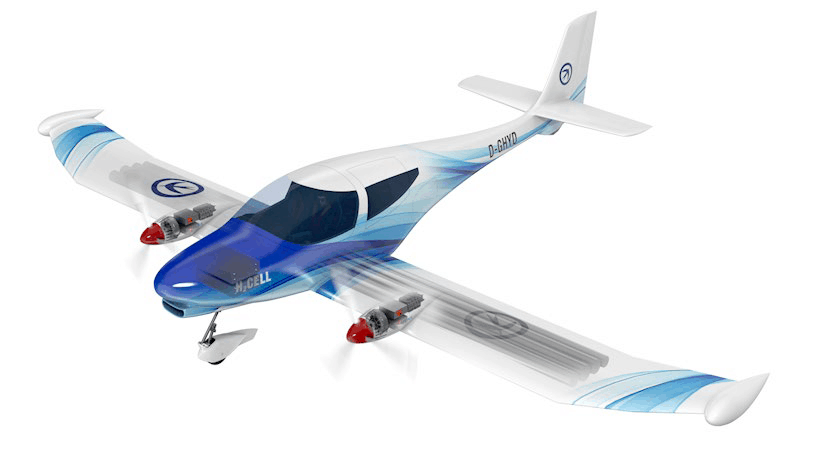
German aviation engineering services specialist Apus Group has begun construction of a hydrogen fuel-cell-powered four-seat aircraft which it plans to fly in mid-2023 and hopes to have on the market by 2025.
In addition to generating zero emissions, Strausberg-based Apus calculates the i-2 will have operating costs 20% lower than the competing Cirrus SR22 at €0.20/nm/passenger ($0.24), assuming a price for hydrogen of €5/kg. ($2.70/lb).
The aircraft will have two fuel cells in the nose, driving two wing-mounted electric propulsion units that are boosted by high-voltage batteries also housed in the nacelles. The pressurized gaseous hydrogen will be stored in tubes integrated into the wing.
Compared with batteries, hydrogen fuel cells provide longer-range zero emission flight—design range of the i-2 is 550 nm and endurance 4.5 hr. But there are penalties, Apus founder Phillip Scheffel told the E2Flight 2021 virtual conference on Feb. 26.
To accommodate the hydrogen storage tubes, the wing is larger than that of the SR22. When you combine that with the extra mass of the electrical systems, 400 kg is added to the maximum takeoff weight compared with the Cirrus four-seater.
“That’s the penalty you have to pay for heavy electric systems,” Scheffel said. “But it is still a compact design. It is not a big disadvantage.
The i-2 is also slower than the SR22. Cruising at 115 kt. reduces the power required from each electric propulsion unit to 50 kW, from 135 kW at takeoff, and provides maximum range. This is competitive with a Cessna 172 or Piper PA28, Scheffel said, but slower than the SR22.
“That is the penalty you pay for long range on renewable energy,” he said.
Apus has conducted preliminary tests of the hydrogen wing tanks, which are made from high-strength carbon-fiber prepreg. The 13.3-m-span (44 ft.) composite wing will house four of the 9.2-m long tanks. For initial flight tests an emergency hydrogen tank will be mounted in the fuselage.
The company has received the molds for the i-2’s composite fuselage. “The first production steps are in progress,” Scheffel told the conference. “Preliminary design is mainly done and we have started detailed design and prototyping.”



Ingen kommentarer:
Legg inn en kommentar
Merk: Bare medlemmer av denne bloggen kan legge inn en kommentar.